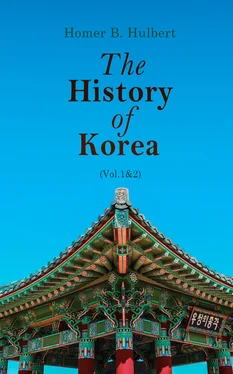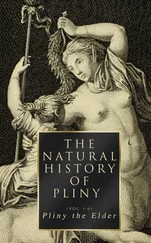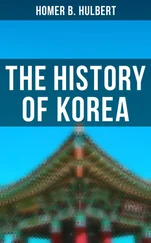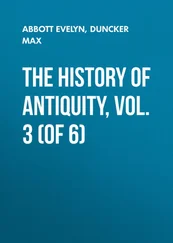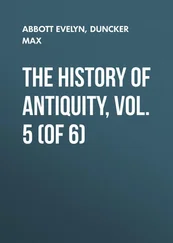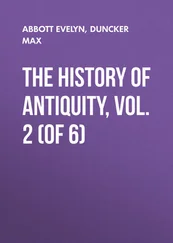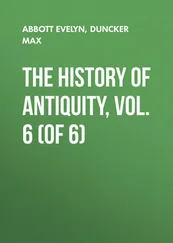The important matter of revenue received early attention. A novel method was adopted. All arable land was divided into squares and each square was subdivided into nine equal parts; eight squares about a central one. Whoever cultivated the eight surrounding squares must also cultivate the central one for the benefit of the government. The latter therefore received a ninth part of the produce of the land. Prosperity was seen on every side and the people called the Ta-dong River the Yellow River of Korea.
As a sign that his kingdom was founded in peace and as a constant reminder to his people he planted a long line of willows along the bank of the river opposite the city, so P‘yung-yang is sometimes called The Willow Capital.
It is contended by not a few that Ki-ja never came to Korea at all and they base their belief upon the following facts. When the Han Emperor Mu-je overcame northern Korea and divided it into four parts he called the people savages, which could not be if Ki-ja civilized them. The Chinese histories of the Tang dynasty affirm that Ki-ja’s kingdom was in Liao-tung. The histories of the Kin dynasty and the Yuan or Mongol dynasty say that Ki-ja had his capital at Kwang-nyŭng in Liao-tung, and there is a Ki-ja well there today and a shrine to him. There was a picture of him there but it was burned in the days of Emperor Se-jong of the Ming dynasty. A Korean work entitled Sok-mun Heun-t’ong-go says that Ki-ja’s capital was at Ham-pyŭng-no in Liao-tung. The Chinese work Il-t’ong-ji of the time of the Ming dynasty says that the scholars of Liao-tung compiled a work called Söng-gyŭng-ji which treated of this question. That book said that Cho-sŭn included Sim-yang (Muk-den), Pong-ch’ŭn-bu, Eui-ju and Kwang-nyŭng; so that half of Liao-tung belonged to Cho-sun. The work entitled Kang-mok says that his capital was at P’yŭng-yang and that the kingdom gradually broadened until the scholar O Si-un said of it that it stretched from the Liao River to the Han. This last is the commonly accepted theory and so far as Korean evidence goes there seems to be little room for doubt.
Ki-ja was fifty-three years old when he came to Korea and he reigned here forty years. His grave may be seen to-day at To-san near the city which was the scene of his labors. Some other places that claim the honor of containing Ki-ja’s tomb are Mong-hyŭn, Pak-sung and Sang-gu-hyun in northern China.
It was not till thirty-six generations later that Ki-ja received the posthumous title of T’ă-jo Mun-sŭng Tă-wang.
The details of the history of K-ja’s dynasty are very meager and can be given here only in the most condensed form. [A]
A. The following details of the Ki-ja dynasty are taken from a work recently compiled in P’yung-yang and claiming to be based on private family records of the descendants of Ki-ja. It is difficult to say whether any reliance can be placed upon it but as it is the only source of information obtainable it seems best to give it. The dates are of course all B.C.
THE TOMB OF KI-JA.
In 1083 Ki-ja died and was succeeded by his son Song. Of his reign of twenty-five years we know little beyond the fact that he built an Ancestral Temple. His successor, Sun, was a man of such filial piety that when his father died he went mad. The next king, Iăk, adopted for his officials the court garments of the Sang Kingdom in China. His son, Ch’un, who ascended the throne in 997 raised fifty-nine regiments of soldiers containing in all 7300 men. The flag of the army was blue. In 943 the reigning king, Cho, feeling the need of cavalry, appointed a special commission to attend to the breeding of horses, and with such success that in a few years horses were abundant. In 890 King Săk hung a drum in the palace gate and ordained that anyone having a grievance might strike the drum and obtain an audience. In 843 a law was promulgated by which the government undertook to support the hopelessly destitute. In 773 King Wŭl forbade the practice of sorcery and incantation. In 748 naval matters received attention and a number of war vessels were launched. The first day of the fifth moon of 722 is memorable as marking the first solar eclipse that is recorded in Korean history. A great famine occurred in 710. King Kwŭl selected a number of men who could speak Chinese and who knew Chinese customs. These he dressed in Chinese clothes which were white and sent them across the Yellow Sea with a large fleet of boats loaded with fish, salt and copper. With these they purchased rice for the starving Koreans. At this time all official salaries were reduced one half. In 702 King Whe ordered the making of fifteen kinds of musical instruments. He also executed a sorceress of An-ju who claimed to be the daughter of the Sea King and deceived many of the people. In 670 King Cho sent an envoy and made friends with the King of Che in China. He also revised the penal code and made the theft of a hundred million cash from the government or of a hundred and fifty millions from the people a capital crime. He ordered the construction of a building of 500 kan for an asylum for widows, orphans and aged people who were childless. In 664 one of the wild tribes of the north sent their chief, Kil-i-do-du, to swear allegiance to Cho-sŭn. In 659 there came to Korea from the Chu Kingdom in China a man by the name of Pak Il-jŭng, who brought with him a medicine called myun-dan-bang which he claimed was the elixir of youth. By his arts he succeeded in gaining the ear of the king and for many years was virtually ruler of the country. At last a king came to the throne who had the wisdom and nerve to order his execution. At this the whole land rejoiced. Banished men were recalled and prisoners were liberated. In 593 King Ch’am came to the throne at the age of five. His uncle acted as regent. But a powerful courtier Kong Son-gang secured the regent’s assassination and himself became virtual ruler. He imprisoned the king in a small pavilion and tried to make him abdicate, but in this was unsuccessful and himself met the assassin’s steel. In 560 the Ha tribe, inhabiting the northern Japanese island of I-so, sent their chief, Wha-ma-gyŭn-hu-ri, to swear allegiance to Cho-sŭn. In 505 the wild tribes to the north became restive and King Yŭ gathered 3000 troops and invaded their territory, taking 1000 heads and adding a wide strip of country to his realm. He put teachers in each of the magistracies to teach the people agriculture and sericulture. In 426, during the reign of King Cheung, occurred a formidable rebellion. U Yi-ch’ung of T’ă-an (now Cha-san) arose and said “I am the Heaven Shaker.” With a powerful force he approached the capital and besieged it. The king was forced to flee by boat and take refuge at Hyŭl-gu (probably an island). But not long after this the loyal troops rallied about the king and the rebel was chased across the northern border. In 403 the king of YŭnYŭn sent an envoy to Korea with greetings. This Yŭn kingdom had its capital at Chik-ye-sŭng where Peking now stands, and its territory was contiguous to Cho-sŭn on the west. But in spite of these friendly greetings the king of Yŭn sent an army in 380 and seized a district in western Cho-sun. They were soon driven back. Fifteen years later a Yŭn general, Chin-ga, came with 20,000 troops and delimited the western border of Cho-sŭn but the Cho-sŭn general Wi Mun-ŭn gathered 30,000 men and lying in ambush among the reeds beside the O-do River surprised the enemy and put them to flight. In 346 a wild chieftain of the north came and asked aid against Yŭn. It was granted to the extent of 10,000 troops. These with 1000 cavalry of the wild tribe attacked and took the border fortress of Sang-gok. Soon after, Yun sued for peace and it was granted.
This ends the apocryphal account of the Ki-ja dynasty. Its contents are circumstantial enough to seem plausible yet we cannot but doubt the authenticity of any records which pretend to go back to such a remote period.
Читать дальше
